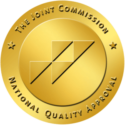Yes, PTSD can indeed get worse over time, but how it progresses depends largely on the individual. Imagine dealing with the lingering effects of trauma that just never seem to go away — one day you might feel like you’re doing okay, and the next, the weight of your past experiences hits you harder than before. It’s a situation many people with PTSD find themselves in, leaving them to wonder: Can PTSD get worse over time?
The truth is, PTSD can escalate for some people due to a variety of factors, and it can be incredibly unpredictable. Everyone’s experience with PTSD is unique, and understanding these nuances can be crucial for managing the symptoms effectively and finding hope in healing.
Definition of PTSD
Post-traumatic stress disorder (PTSD) is a mental health condition that can develop after experiencing or witnessing a traumatic event, such as combat, a natural disaster, a violent attack, or a serious accident. Unlike temporary distress, PTSD can deeply impact a person’s emotional, mental, and physical well-being, often lasting for years. For those affected, even everyday life can serve as a reminder of their trauma. Over time, the symptoms can interfere with daily functioning, relationships, and overall quality of life.
Common symptoms include:
- Flashbacks: Reliving the traumatic event as if it’s happening again, often triggered by reminders.
- Nightmares: Disturbing dreams about the trauma, causing anxiety or fear.
- Hypervigilance: Being constantly on edge and easily startled, with a heightened sense of danger.
- Avoidance: Steering clear of situations, places, or people that trigger memories of the trauma.
- Negative Mood: Feeling disconnected, hopeless, or unable to experience positive emotions.
- Emotional Numbing: Difficulty feeling or expressing emotions, resulting in detachment from others.
- Irritability: Increased anger or frustration, sometimes over small issues.
- Sleep Problems: Difficulty falling or staying asleep, often due to anxiety or nightmares.
Factors That Influence Healing From PTSD
Understanding why PTSD can worsen over time requires an exploration of the various factors that influence how a person heals from this condition. The road to recovery is never straightforward, and these influences can play a significant role:
The intensity, duration, and type of trauma experienced have a profound impact on PTSD. A person who has endured repeated, prolonged trauma may experience a more complex or severe form of PTSD compared to someone who has experienced a single, isolated traumatic event. The more intense and intrusive the trauma, the more likely it is to have lasting effects.
Individuals who have a history of anxiety, depression, or other mental health conditions may have a more difficult time recovering from PTSD. These conditions can compound the symptoms of PTSD and make it harder to manage, leading to worsened mental health over time.
One of the most important factors influencing PTSD recovery is the availability and quality of treatment. Those who have access to professional help, including therapy, counseling, or medication, tend to recover more effectively. However, a lack of access to treatment or inadequate mental health care can cause PTSD symptoms to worsen.
Having a strong network of family, friends, or a community can greatly impact the healing process. Support from loved ones provides emotional stability and comfort during difficult times, whereas isolation can lead to increased stress and the deepening of PTSD symptoms.
Demographics such as age, gender, and personality traits can also influence how PTSD progresses. For instance, research suggests that women are more likely to develop PTSD than men, while older adults may experience a slower recovery due to factors like physical health or the cumulative effect of trauma over a lifetime.
How PTSD Can Change Over Time
PTSD is not a static condition, and it can evolve as time passes. Here are some key aspects of how PTSD can change:
The “kindling effect” refers to the process by which repeated trauma or stressors make a person more susceptible to further emotional reactions. In other words, each traumatic event, no matter how small it may seem, can increase the likelihood that PTSD symptoms will become more severe. This effect can create a snowball effect, where the symptoms escalate over time, making it harder to recover.
New traumatic events can further trigger and amplify existing PTSD symptoms. Even if a person has been coping well for some time, another traumatic experience (whether related or unrelated to the initial trauma) can reignite old feelings of fear, helplessness, and anxiety. The intensity of the initial trauma, combined with subsequent incidents, can create a vicious cycle, leading to worsened PTSD.
What if I Never Get Better From PTSD?
For those struggling with PTSD, it’s natural to wonder: What if I never get better? It’s essential to remember that PTSD is dynamic by nature—it doesn’t have to define your entire life, and it doesn’t mean you’re permanently broken. There is hope for healing and improvement, even if it doesn’t happen on a linear timeline.
Here are some things to keep in mind:
PTSD can evolve and change. You may experience periods of relief where symptoms are manageable, followed by flare-ups where symptoms feel overwhelming. The key is understanding that these fluctuations are part of the healing process. As you work through your trauma, it’s common to experience ups and downs. Healing is not a destination. It’s a journey that requires patience, persistence, and self-compassion.
Healing from PTSD is about learning to cope with the symptoms in healthy ways. This might involve therapy, developing coping strategies, or practicing mindfulness. Some individuals find comfort in creative outlets like writing, art, or music, while others benefit from physical activities such as yoga or hiking. Whatever works for you, focusing on healthy coping mechanisms can help you manage symptoms more effectively and gradually reduce their impact.
Taking care of your overall well-being is a crucial part of managing PTSD. This includes focusing on mental, physical, and emotional health. A healthy lifestyle that includes regular exercise, good nutrition, and sufficient sleep can support the healing process. Mental health practices like meditation or mindfulness can also help maintain a sense of calm and self-awareness, making it easier to manage stress and trauma triggers.
Treatment for PTSD: Finding the Right Path to Healing
Treating PTSD typically involves a combination of psychotherapy, medication, and lifestyle changes.
Cognitive Behavioral Therapy (CBT), exposure therapy, and Eye Movement Desensitization and Reprocessing (EMDR) are highly effective therapies. They assist individuals in facing traumatic memories, alleviating emotional distress, and building healthier coping mechanisms. In some cases, Trauma-Focused Cognitive Behavioral Therapy (TF-CBT) is particularly beneficial for those who have experienced childhood trauma.
Medications such as antidepressants (SSRIs) and anti-anxiety medications help manage symptoms like anxiety, depression, and hypervigilance. Prazosin may also be prescribed to help reduce nightmares and enhance sleep quality.
Mindfulness, yoga, art therapy, and animal-assisted therapy provide alternative healing approaches. These holistic therapies help individuals reduce stress, increase emotional awareness, and support mental health through creative and physical outlets.
Regular exercise, improving sleep hygiene, and adopting a healthy diet are essential for managing PTSD symptoms. These practices support physical health, boost mood, and enhance overall well-being, aiding recovery.
Combining these treatments offers a comprehensive approach to PTSD recovery, providing individuals with various tools to navigate their healing journey.
Receive Support at Eagle Creek Ranch Recovery
If you’ve been asking yourself if PTSD gets worse over time, the key lies in understanding the factors that influence PTSD progression and taking proactive steps to seek treatment, build a support system, and prioritize your mental health.
At Eagle Creek Ranch Recovery in Nampa, ID, you’ll find a supportive environment where you can heal at your own pace. Whether you’re seeking therapy, group support, or holistic healing, our dedicated team is committed to helping individuals navigate their PTSD journey and reclaim their lives. It’s never too late to seek the support you deserve. Contact us today to learn more.

Clinical Director
Kendall Maloof is the clinical director at Eagle Creek Ranch Recovery. She is a licensed marriage and family therapist and has held multiple leadership roles before settling here at Eagle Creek Ranch Recovery. Kendall received her master’s degree in marriage and family therapy from the Chicago School of Professional Psychology in 2016. Her career in mental and behavioral health began in 2014 when she took up internships in both the nonprofit and for profit sectors. She interned at multiple reputable companies, such as The Living Success Center and 449 Recovery in California.
In 2019, Kendall became the clinical director of Sunsets Recovery for Woman, a dual diagnosis program in southern California. Kendall is a natural leader. She has an incredible ability to problem solve and stay calm in any situation. Kendall never fails to show up when she is needed, and her calm demeanor makes her team and clients feel at ease. Eagle Creek Ranch Recovery is proud to have Kendall as our clinical director.



